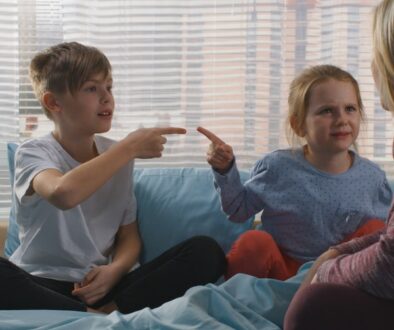Dysregulated Children (or selves)
Dysregulated Children (or selves) – How are we doing, caregivers?
How are we doing, caregivers? Are we taking care of ourselves as much as we are our children, partners, jobs, parents, closet- cleaning etc.? Don’t forget, we need to put on our own oxygen masks before attending to others! There are many articles and posts out there now about healthy ways to engage in self-care, so I am just going to leave the reminder here for you. What I wanted to discuss is how are we handling our children’s dysregulated behavior.

Have you noticed an increase in dysregulation, either more frequent or more intense behavior? The Back to School season is rampant with stress (both good and bad) which leads to an increase in dysregulated emotions and behavior! And not just for the children- caregivers are certainly not immune to Back to School stressors! There’s a whole lot of crazy going on right now! Here’s the double whammy- because of reciprocal regulation, our children pick up on our own dysregulated states (anxiety, anyone?) and mirror them, which in turn, increases our frustration and anxiety and so on and so on… It is imperative to understand that if we want to help get our children’s behavior under better control, we need to do so, too. (Cue the self-care reminder). So, let’s start there. How do we practice self-regulation? Heck, let’s be masters of efficiency and work on our own and our child’s self-regulation! Here are some tried and true tricks of the trade (with some nerdy neuroscience thrown in for fun).
Deep Breathing
Deep breathing sounds cliché, but it’s true. Teach your child to breathe in through their nose slowly (4-6 counts), then out through their mouth slowly, like they’re blowing through a tiny straw (another 4-6 counts). 5 good breaths and you should both be feeling more regulated. NERDY SCIENCE ALERT: Deep diaphragmatic breaths stimulate the vagus nerve which ends in the insular cortex (which is activated during sensory perception, emotional regulation, and executive functioning).
Yoga
Yoga is another great activity to share with your kids- and reap the benefits as well. There are tons of free videos and apps that walk you through basic yoga moves, suitable for kids and bodies of all abilities.
5-4-3-2-1
Teach your child this quick mindfulness activity. Have them come up with 5 things they can see, 4 things they can hear, 3 things they can touch, 2 things they can smell (or enjoy the smell of and have them imagine them), and 1 thing they can taste (or enjoy the taste of and have them imagine it).
Mandala Coloring
Print out some mandala coloring sheets or age-appropriate mazes and practice the art of focusing attention on a task. Don’t forget to post your artwork on the fridge!
Take a Break
Find a special sound/ alarm/chime etc. and have your child “freeze” when they hear the sound. They should find a comfortable position, close their eyes and just relax for 2 minutes. Try this a few times per day to give their brains a break (this is a nice one for us, too)!
Cardio Time
Depending on their age/ abilities, run around the block (or the house) as fast as you can. If it’s yucky outside, do jumping jacks, burpees, or run up and down the stairs for a few minutes. Time them or make it a game (or a contest).
Improve Emotional Awareness
Sit with your child and watch their favorite show for an episode. Pause and ask what the characters might be thinking and feeling in different situations. This builds emotional awareness and social perception- and don’t underestimate how important it is for your child to share their favorite things with you (even if it’s super annoying😊).
Create a Safe Place, Fort, or Hidey-hole
Create a safe place, fort, or hidey-hole for your child to escape to when they are overstimulated or just need a break. This can be a blanket over a couple of chairs, a closet, or corner. Have something soft and cuddly to sit/ lay on and some sensory toys (fidgets, putty, music, wiggle cushion etc.)
Hydrate
Stop and hydrate- drink some water! Frequently dysregulation can be caused or exacerbated by dehydration.
Dance Party
Crank up some music and go nuts! Dance with your child- try to get them to engage both sides of their body, cross their arms, jump up and down, spin etc. When the music stops, they freeze- and when it picks back up again- dance on!!!
Praise Your Child
**A note- Always praise your child for the effort they put into a process and not for the outcome. We want to emphasize that success comes from trying, not from results.
Stay well,
Dr. L




